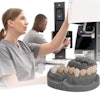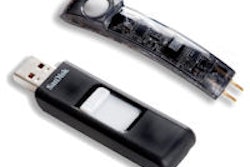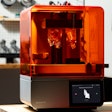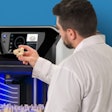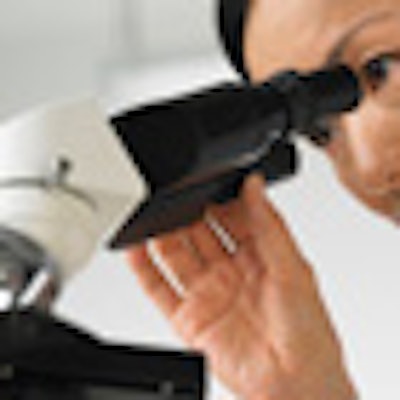
The advent of more compact, lower-priced laser systems for dentistry is expected to lead to more lasers being used by more practitioners in multiple operatories. Could this trend pose a challenge in terms of laser training and safety?
Nearly every laser in dentistry -- except those used for diagnostic or photodynamic purposes -- is considered by the FDA to be a class IV device, which means they pose eye, skin, fire, diffuse reflection, and plume radiation hazards and may produce laser-generated air contaminants. This means regardless of whether a practitioner is using an erbium hard-tissue laser, a periodontal Nd:YAG laser, or a compact diode laser, the same safety rules apply.
— Samuel Low, D.D.S., M.S., president,
American Academy of
Periodontology
During a dental procedure, the biggest risk is that laser light reflecting from dentin or a mirror may inadvertently damage an unprotected eye (General Dentistry, November-December 2008, Vol. 56:7, pp. 653-659). An Nd:YAG laser or diode laser, for example, can burn the retina or lens, while the erbium is more likely to damage the cornea or lens.
"Lasers are not like any other device we use in dentistry, with the exception of x-rays, where there is truly a safety factor," said Samuel Low, D.D.S., M.S., president of the American Academy of Periodontology, who uses lasers extensively in his practice. "When we talk about safety, we are talking about absorption in tissue. The problem is the wavelength reflecting off of something in the mouth."
Under the microscope
But with appropriate training and equipment -- most notably, safety goggles with wavelength-specific filters -- dental lasers are safe and effective for a number of dental procedures. A recent study on laser safety under a dental microscope, for example, found that laser energy transmitted through the microscope was not detectable or fell below the maximum permissible exposure (MPE) guidelines for each laser type -- even without filters (Australian Endodontic Journal, April 2010, Vol. 36:1, pp. 6-11).
Working with three common dental lasers -- Nd:YAG, erbium (Er:YAG), and diode -- researchers from Tokyo Medical and Dental University positioned the end of the tips at a distance of 5 cm from the objective lens of a dental microscope. Eye protectors were shaped into flat disks and fixed on the microscope lens. The filters were placed in front of the objective lens or behind the eye lens.
In one experiment, each laser was fired at 200 mJ at 10 pps for 10 seconds to matched or mismatched eye protectors. The energy transmitted through the eye protectors was measured with the detector and a power meter. As a control, the lasers were applied directly to the detector positioned at a distance of 5 cm from the tip of the optical fibers or the contact tip. The results are listed in the chart below.
Laser energy (mW) transmitted through the microscope
|
When exclusive laser eye protectors were used for each corresponding laser, transmitted energy was 0 mW. However, when the Nd:YAG laser was irradiated to the nonexclusive eye protectors and the diode laser to the ones other than the exclusive one and the Nd:YAG eye protector, the transmitted energy was beyond the MPE.
Safety equipment and training key
|
Responsibilities of the laser safety officer Every dental practice that uses a surgical or periodontal laser should appoint a laser safety officer (General Dentistry, November-December 2008, Vol. 56:7, pp. 653-659). Among their responsibilities:
|
These findings point to the importance of using the appropriate equipment and education, the researchers noted. An average of 35 laser injuries occur in the U.S. each year, with failure to wear available eye protection one of the most frequent contributing factors to these injuries, according to the Laser Institute of America (CLSOs ' Best Practices in Laser Safety, 2008, pp. 155-172).
"It is desirable that exclusive eye protectors [those tailored to the wavelength of the laser] be worn before laser use, including through a microscope," the authors wrote. "Every participant, from the receptionist to the office manager, must be equally trained and educated regarding laser safety issues."
Even someone just walking by the operatory to say "hi" while a laser is in use should be wearing glasses, Dr. Low said.
Each practice should also appoint a laser safety officer who, among other duties, will be responsible for posting warning signs when a laser is in use and ensuring that the devices are used properly and only by those individuals with appropriate training.
"A lot of dentists don't realize you are supposed to have a safety officer if you have a laser," Dr. Low said. "There has to be a safety officer, and everyone has to be wearing safety glasses, and those glasses have to be specific to the laser you are using. I think that is where some people get confused."
In addition, although federal guidelines mandate that class IV lasers must be operated only by trained, authorized personnel, only two state dental boards -- Arizona and Nevada -- currently require laser users to be board-certified, according to Dr. Low.
Handheld lasers too
These same safety measures apply to the compact, handheld lasers that have come onto the market in the last two years, such as the iLase from Biolase Technology and the Styla Microlaser from Zap Lasers. With their greater mobility, these diode-laser devices could pose new challenges for a practice's laser safety officer.
"A clinician can easily carry all the components of the iLase in one hand and you don't have to plug it into a power outlet," said CEO David Mulder during a press conference introducing the device at the Chicago Midwinter Meeting last February. "We expect the device to significantly improve workflow in the dental suite by making it easier than ever for any dentist and hygienist to bring laser technology to any patient."
Safety is "critically important to us," said Wayne Harrison, D.D.S., vice president of sales and marketing for Biolase. "The iLase is not an instrument that just turns on and fires when it's picked up." For example, a series of three clicks is required to put the laser into ready position, then, when activated, a delay occurs before the laser fires. The device also has a mechanism for locking it down in between uses, Dr. Harrison noted.
In addition, he said, Biolase offers the same training for the iLase as for its other laser products: an in-office orientation on the laser and its operation and safety features by a Biolase laser specialist. The company also offers a one-day orientation course and requires everyone who takes that course to take a proficiency exam. Educational videos and related materials are available online (waterlasedentistrytraining.com), and a training DVD specific to the iLase is sent to customers as well, according to Dr. Harrison.
"One of the things we stress is that every dental office must have a safety officer who makes sure the proper signage is up when a laser is in use and that proper glasses are worn," he said. "I think that with these features, along with the laser safety we teach with all of Biolase's classes, dental offices will adhere to good safety practices. I think the awareness will be there."
Dr. Low, however, believes that more training is required to ensure patient and provider safety.
"No one should be using a laser, no matter what you are using it for, without truly being certified, and that certification should be at least six hours," he said. "To give a hygienist or dentist a laser with minimal training, you have to be concerned about the eyes."
Copyright © 2010 DrBicuspid.com

